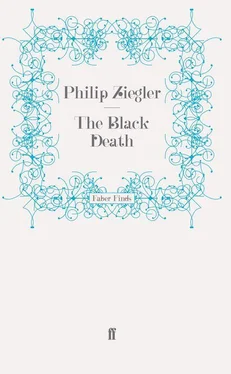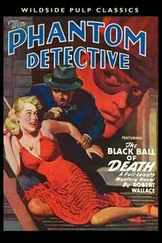which were the stock-in-trade of Chaucer’s alchemist.
The situation of medicine was not helped by the stern determination of the medieval churchman to keep the physician in his place. What Professor Gurlt described as ‘that fatal exaggeration which enthroned theology not merely as mother but as Queen of all the sciences’, {124} 124 20 Geschichte der Chirurgie, Berlin, 1878, Vol. 1, p. 673.
ensured that the doctor would play a secondary role. In the sick room it was the priest who took the lead and the doctor who humbly offered his services once the praying was over. Before he even treated a patient the doctor was supposed to establish whether he had first confessed; if he had not, then medicine would have to wait its turn. Sometimes the doctor would manage to assert himself but, in general, the more eminent the invalid, the more likely it was that he would find himself thrust into the back row behind a bevy of churchmen and courtiers. When the disease worked quickly a doctor might not even be admitted to his patient’s bedside until death was imminent or had actually occurred.
But the Church, by the stranglehold which it had on every field of education, ensured that the invalid would have gained little even if the doctor had been given a freer hand. All medical teaching at the universities was on lines laid down by the Church and consisted mainly of the reading of outmoded texts with a brief and usually misleading ‘interpretation’ by the professor. Surgery was the poor relation of an anyhow impoverished science. In 1300, Boniface VIII published a Bull forbidding the mutilation of corpses. His object was to check the excesses of relic hunters but, incidentally, he dealt a crippling blow to would-be anatomists. Soon afterwards the Medical Faculty of Paris formally declared itself an opponent of surgery. At Montpellier, supposed to be among the most enlightened of the medical schools, there was one practical anatomy lesson every two years. This long and eagerly awaited occasion consisted merely of the opening of an abdomen and a cursory exposition of its contents. It was not till the end of the fifteenth century that Sixtus IV authorized the practice of dissection and even then specific authority had to be obtained on each occasion.
Given such handicaps it would have been miraculous if the medical profession had met the Black Death with anything much more useful than awe-struck despair. Their efforts were as futile as their approach was fatalistic. Not only were they well aware that they could do little or nothing to help but they considered it self-evident that an uncharitable Deity had never intended that they should. ‘The plague’, wrote Gui de Chauliac, one of their most distinguished and, incidentally, successful practitioners, was ‘shameful for the physicians, who could give no help at all, especially as, out of fear of infection, they hesitated to visit the sick. Even if they did they achieved nothing, and earned no fees, for all those who caught the plague died, except for a few towards the end of the epidemic who escaped after the buboes had ripened.’ {125} 125 21 La Grande Chirurgie, op. cit., p. 171.
A doctor not prepared to visit the sick must, of course, labour under a singular disadvantage but de Chauliac was certainly right in his contention that, from the point of view of the infected, it made little difference. Nothing in the medical literature which survives suggests that the treatment of the doctors, though it may sometimes have eased a patient’s sufferings, can have been directly responsible for a single cure.
The views and activities of the doctors are reasonably well known through the plague tractates which they left behind them. Sudhoff’s Archives {126} 126 22 Archiv für Geschichte der Medizin, 1910 onwards.
already reproduce well over two hundred and eighty of these. Many relate to other phases of the great pandemic but seventy-seven were written before 1400 and at least twenty before 1353. The majority of the most important studies relating to the Black Death have been analysed by Dr Anna Campbell in her invaluable work, The Black Death and Menof Learning. {127} 127 23 New York, 1931.
The preamble to the Report of the Faculty of Medicine at Paris demonstrates admirably the vague, hopeless search for arcane solutions which appeared again and again in the tractates: ‘Upon seeing effects whose cause is concealed even from the most highly trained of intellects, the mortal mind must ask itself, especially as there is in it an innate desire for appreciation of the good and of the true, for what reason everything seeks good and desires knowledge…’
But the windy nothingness of this somewhat unhelpful speculation was by no means typical. There was much shrewd observation and a certain amount of common sense and sound judgement in the recommendation of measures which, though no more than palliatives, still did more good than harm. Certainly there was a depressing readiness to stress that flight was the only possible defence against the plague or to argue that, if flight were impossible, there had better be immediate recourse to prayer. But the patient was also given a certain amount of guidance on how he should conduct himself. It seems unlikely that much confidence was inspired among those threatened or afflicted by the plague but some people must at least have been given a ray of hope and a feeling that they were not entirely helpless in the face of destiny.
Differences of opinion between the experts were frequent. Simon of Covino {128} 128 24 Bibl. de l’École des Chartes, (1840–41), Sér. 1, Vol. 2, p. 240.
considered that the pregnant woman and, even more, ‘those of fragile nature’ would succumb and that no doctor could help them. The undernourished pauper would be the first to go – a reasonable conclusion which the Medical Faculty, however, rejected, claiming that those ‘whose bodies are replete with humours’ were the most vulnerable. Ibn Khātimah {129} 129 25 Sudhoff, XIX, p. 49.
agreed with the Faculty. People of ‘hot, moist temperament’ were the most exposed; the ultimate in peril was to be a stout young woman with a taste for lechery.
There was more agreement on the best place to live so as to avoid the plague. Seclusion, obviously, must be a first priority. After that, the problem was how to keep out of the way of the dreadful miasma, the infected air which, borne generally by the south wind, carried death from land to land. A low site, sheltered from the wind, was of course desirable. The coast was to be shunned; with good reason because of the threat from shipborne rats though the danger was visualized by the tractators as corrupt mists creeping lethally across the surface of the sea. Marsh lands were not to be recommended for here too rose the killing mist. Houses should face north; windows preferably be glazed or covered with waxcloth.
Even in the most prosperous practices – and where there was no prosperity there was generally no doctor – the doctor recognized that many of his clients would not be able to flee to remote spots where they might hope to escape the plague. Rules had to be laid down for the conduct of life in a plague-stricken area. If infection was carried by corrupted atmosphere then what was needed was something to build up counter-bodies within the air. Dry and richly scented woods were to be burnt: juniper, ash, vine or rosemary. Anything aromatic was of value: wood of aloes, amber, musk, or, for the less prosperous, cyprus, laurel and mastic. A typical recipe for a powder to throw on the fire {130} 130 26 Primo de Epydimia, Sudhoff, V, p. 43.
was one ounce each of choice storax, calamite and wood of aloes mixed in a mortar with rose-water of Damascus and made into small, oblong briquettes. The house was to be filled, whenever possible, with pleasant smelling plants and flowers and the floors sprinkled with vinegar and rose-water. If one was unfortunate enough to have to leave one’s house a prudent precaution would be to carry an amber or smelling apple. If amber was too expensive a cheaper but efficacious substitute could be contrived from equal portions of black pepper and red and white sandal, two portions of roses and a half portion of camphor. The resulting blend was then pounded for a week in a solution of rose-water and moulded into apples with paste of gum arabic.
Читать дальше












